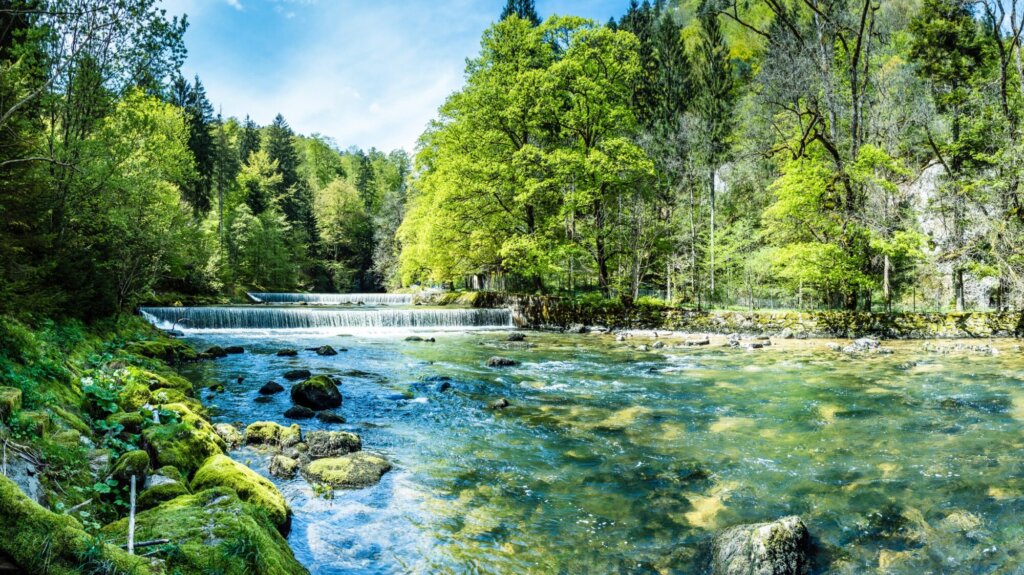GUEST BLOG: Written by John Tippett, adjunct faculty in the Department of Earth and Environmental Sciences at the University of Mary Washington, Fredericksburg, Virginia.
The Environmental Protection Agency has identified urban stormwater runoff as the fastest growing source of water pollution in the United States. Companies and communities rely on clean water, yet not enough businesses are paying attention to the impact they have on water quality.
Improving land development practices is a low-hanging opportunity to address this problem. While some companies may appear to have a minimal land footprint, their value chains almost certainly do, particularly via warehousing and logistics.
The water impacts start when land parcels are developed and the land surface transitions from natural vegetation to an impervious surface like rooftops or parking lots. The characteristics of water flow (runoff and infiltration volume, frequency of high flow, and timing of flow) from a site become substantially altered. Downstream from developed areas, streams with altered flow regimes frequently respond by carving wider or deeper channels. This results in significant erosion, loss of the vegetated streamside buffer, and downstream deposition of sediments which can bury critical gravel spawning areas or smother less mobile species such as clams and oysters. Further, the rainwater that flushes off of large impervious areas, such as parking lots, carries a cocktail of contaminants ranging from hydrocarbons to microplastics from tire wear.
Why Stormwater Ponds Are Not Enough
Conventional stormwater management has sought to address part of this problem through the use of stormwater ponds. A common sight, these facilities temporarily detain a portion of the stormwater runoff from a site, reducing some of the downstream flooding effects of large impervious areas.
However, conventional stormwater ponds are limited in their effectiveness. The ponds hold back high flows and then meter that excess water out more slowly in the hours after a rainstorm. That generally keeps waters out of the floodplain, which is good for protecting downstream property. But the drainage flows are still quite high, enough to keep urban streams full to the tops of their banks for an extended period.
Essentially, these ponds trade a brief period of flood waters for an extended period of “bank-full” stream flow. Unfortunately, that level of flow energy, especially when it is maintained over a long duration, can be highly erosive. This is why, when we visit urbanizing watersheds (even those with conventional stormwater management on all development), we see streams that are effectively reamed out. We see steep eroding banks, high sediment loads (cloudy water), and profoundly degraded aquatic health.
Sustainability via the Developed Landscape
Enter the science of Low Impact Development (LID). LID seeks to replicate all the pre-development characteristics of water flow on a developed site, not just the peak flow volume. Through the use of a variety of green infrastructure practices, LID intercepts the water at its source and seeks to infiltrate a portion of that water back into the soil, which is where it would have gone prior to construction of the development. LID also puts the natural pollutant removal ability of soils to work in purifying the runoff before it recharges the groundwater.
Using soils and land cover data, we can calculate the increase in runoff that occurs on any given development site. That means we can quantitatively define what is required to achieve “low impact” in the context of water flow off the site. Then, we undertake work to minimize excess impervious cover, and we design practices that intercept and infiltrate the water that does runoff.
What does this look like in practice? Perhaps surprisingly, the types of infrastructure practices that can meet LID goals do not require vast areas of developable land to be sacrificed to ever-larger stormwater ponds. The key is to intercept and infiltrate water near the source. Imagine a typical parking lot at a big-box retailer. The strips between parking rows are typically comprised of vegetated islands (albeit highly trampled and unsightly). LID seeks to make those areas “hydrologically functional”. So, we forgo the curb that diverts water, and allow runoff to flow into these areas. But, in order to truly turn them into sponges and filters, we need to replace the compacted soil with a loose mix of sand and organic matter. Cover it with mulch and plant with a variety of species that can tolerate fluxes between dry and wet and —Voila! You have created a stormwater bioretention facility, aka “Rain Garden”. It is worth noting that these areas are not wetlands and they hold shallow standing water only briefly after a rain event.
Through this process, you have also created a beautiful amenity for your parking lot…a bit less “asphalt jungle” and a bit more “oasis”. The vegetative cover that thrives in these areas also can contribute substantially to lower the “heat island” effect which plagues our urban asphalt centers. It is also a very visible way to demonstrate your sustainability goals to customers and clients.
Additionally, the pollutant removal of Low Impact Development practices can substantially exceed that of conventional stormwater ponds. Soil, nature’s own filter, has an astounding capacity to trap pollutants such as nitrogen, phosphorus, oil, grease, and even antifreeze. The billions of bacteria and fungi in the soil can then consume these pollutants and break them down into less detrimental forms. Indeed, due to the nutrient capture, rain gardens frequently harbor some of the best growing trees on a site!
Rain gardens are just one tool in the Low Impact Development toolkit. Others include:
- Rooftop Gardens (aka Green Roofs)
- Tree Preservation
- Vegetated Swales, Buffers & Strips
- Roof Downspout Disconnection
- Rain Barrels and Cisterns
- Permeable Pavers
- Soil Amendments
- Impervious Surface Reduction & Disconnection
- Pollution Prevention & Good Housekeeping
For more information visit: https://www.epa.gov/nps/urban-…
Photo by frame harirak.


